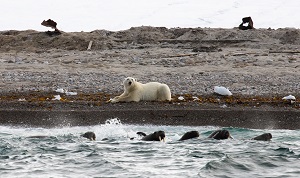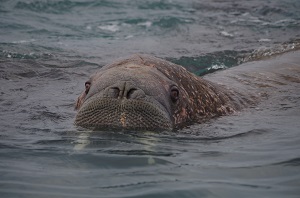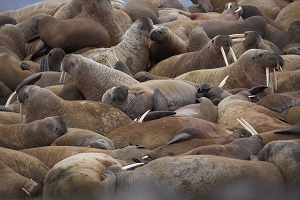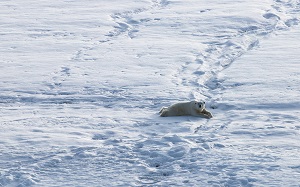Rosneft’s Environmental Expedition Returns from the Arctic with New Data on Red Listed Animals

Rosneft Oil Company’s research expedition organised as part of its corporate programme to preserve the biodiversity of Arctic ecosystems. has concluded. Specialists from the Company’s Arctic Research Centre and the A. N. Severtsov Institute of Ecology and Evolution of the Russian Academy of Sciences spent a month monitoring and researching the polar bear population and the Atlantic walrus subspecies.
 Environmental protection is one of the key priorities for Rosneft Oil Company in its operations. The Company has been implementing a comprehensive Arctic research programme for the past 10 years. More than 30 scientific expeditions have been carried out to study the ice situation. weather conditions. geological structure of soils and fauna. which are bio-indicators of the environment state.
Environmental protection is one of the key priorities for Rosneft Oil Company in its operations. The Company has been implementing a comprehensive Arctic research programme for the past 10 years. More than 30 scientific expeditions have been carried out to study the ice situation. weather conditions. geological structure of soils and fauna. which are bio-indicators of the environment state.
During the latest expedition. scientists surveyed 34 islands in the Franz Josef Land and Novaya Zemlya archipelagos. as well as Victoria Island on the northwest border of the Russian Arctic territories.  Unmanned aerial vehicles have been used to count the number of walruses at the largest rookeries. According to preliminary data. 7.145 animals were detected. twice as many as last year in the same areas. The largest walrus haulout in the history of Arctic research was discovered on the Eva-Liv Island (Franz Josef Land archipelago).
Unmanned aerial vehicles have been used to count the number of walruses at the largest rookeries. According to preliminary data. 7.145 animals were detected. twice as many as last year in the same areas. The largest walrus haulout in the history of Arctic research was discovered on the Eva-Liv Island (Franz Josef Land archipelago).
Polar bear surveys were carried out at Cape Zhelaniya (Novaya Zemlya archipelago). 4 animals were surveyed using a remote immobilization method. which poses no threat to their life or health. The two females are wearing satellite collars. which will enable scientists to remotely track the bears’ migration routes.
 The expedition members conducted 24-hour shipboard observations of marine mammals and birds. A large herd of beluga whales - about a thousand animals - was detected in the passage between Franz Josef Land islands near Graham Bell Island. A flock of the Sabine’s gull. rarely seen in this region. was also detected in the Hoffmann Island area.
The expedition members conducted 24-hour shipboard observations of marine mammals and birds. A large herd of beluga whales - about a thousand animals - was detected in the passage between Franz Josef Land islands near Graham Bell Island. A flock of the Sabine’s gull. rarely seen in this region. was also detected in the Hoffmann Island area.
The research work. carried out in line with global best practices. will enable scientists to expand and update population data on the species under study and develop measures to preserve them.
Rosneft
Information Division
September 9. 2021